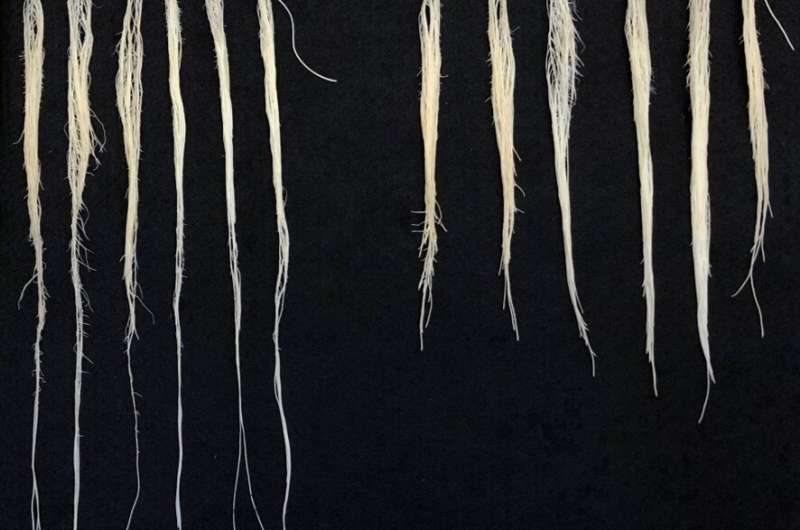This article has been reviewed according to Science X's editorial process and policies. Editors have highlighted the following attributes while ensuring the content's credibility:
fact-checked
peer-reviewed publication
trusted source
proofread
Scientists unlock key to drought-resistant wheat plants with longer roots

Growing wheat in drought conditions may be easier in the future, thanks to new genetic research out of the University of California, Davis.
An international team of scientists found that the right number of copies of a specific group of genes can stimulate longer root growth, enabling wheat plants to pull water from deeper supplies. The resulting plants have more biomass and produce higher grain yield, according to a paper published in the journal Nature Communications.
The research provides novel tools to modify wheat root architecture to withstand low water conditions, said Gilad Gabay, a postdoctoral researcher in the Department of Plant Sciences at UC Davis and the first author on the paper.
Roots key to better yield in drought
"Roots play a very important role in plants," he said. "The root absorbs the water and the nutrients to support plants' growth. This finding is a useful tool to engineer root systems to improve yield under drought conditions in wheat."
Much has been done to improve wheat production but losses from water stress can erase other improvements. Plants that can adapt to low water conditions but have increased yield will be key to growing enough food for a growing population in the face of global warming.
Until now, little has been known about the genes that affect the root structure of wheat. The discovery of the gene family—known as OPRIII—and that different copies of these genes affect root length is a significant step, said Distinguished Professor Jorge Dubcovsky, the project leader in the lab where Gabay works.
"The duplication of the OPRIII genes results in increased production of a plant hormone called Jasmonic acid that causes, among other processes, the accelerated production of lateral roots," Dubcovsky said. "Different dosages of these genes can be used to obtain different roots."
From genomics to breeding
To get longer roots, the team of researchers used CRISPR gene editing technology to eliminate some of the OPRIII genes that were duplicated in wheat lines with shorter roots. By contrast, increasing the copies of these genes caused shorter and more branched roots. But inserting a rye chromosome, which result in decreased OPRIII wheat genes, caused longer roots.
"Fine-tuning the dosage of the OPRIII genes can allow us to engineer root systems that are adapted to drought, to normal conditions, to different scenarios," Gabay said.
Knowing the right combination of genes means researchers can search for wheat varieties that have those natural variations and breed for release to growers planting in low-water environments.
Junli Zhang, Germán Burguener and Tyson Howell from the Department of Plant Sciences contributed to the paper, as did researchers from China Agricultural University in China, Fudan University in China, Howard Hughes Medical Institute in Maryland, Karolinska Institute in Sweden, National University of San Martin in Argentina, Technological Institute of Chascomús in Argentina, UC Berkeley, University of Haifa in Israel and UC Riverside Metabolomics Core Facility.
More information: Gilad Gabay et al, Dosage differences in 12-OXOPHYTODIENOATE REDUCTASE genes modulate wheat root growth, Nature Communications (2023). DOI: 10.1038/s41467-023-36248-y
Journal information: Nature Communications
Provided by UC Davis





















